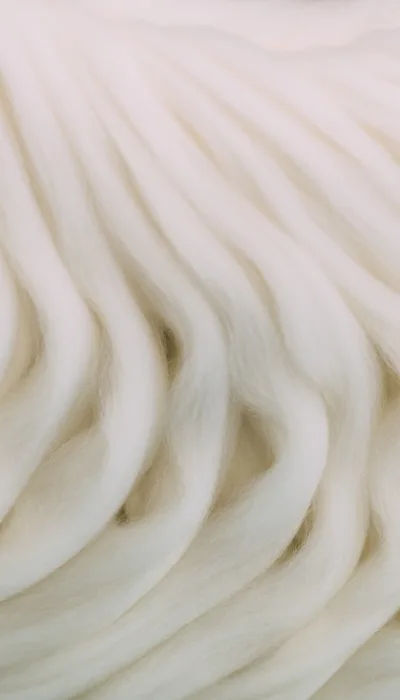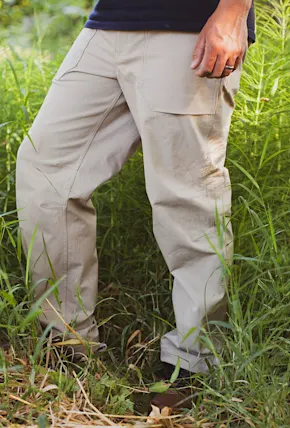In the world of outdoor apparel, there’s always another miracle fabric. First, it was Nylon, invented in 1935 and lauded for its variety of applications and durability. In the mid-20th century, polyester was peddled for its wrinkle resistance and moisture-wicking capabilities. Often left unsaid: both synthetics are made from fossil fuels and will never biodegrade. Oops.
Merino wool on the other hand, does not have this issue, and has been described as a wondrous, all-natural, temperature-regulating fabric. But the process by which it is twisted into yarn typically means it is often seen as too heavy to wear in warm weather—it also causes it to hold water, and makes it susceptible to tears. Textile industry veteran Andy Wynne first noticed these drawbacks when he moved to New Zealand and started working with a Merino textile manufacturer. To solve the problem, he designed a twist-free way to spin merino fabric into yarn that helps it retain its renowned performance properties in a lighter, more breathable base material. And thus, Nuyarn was born.
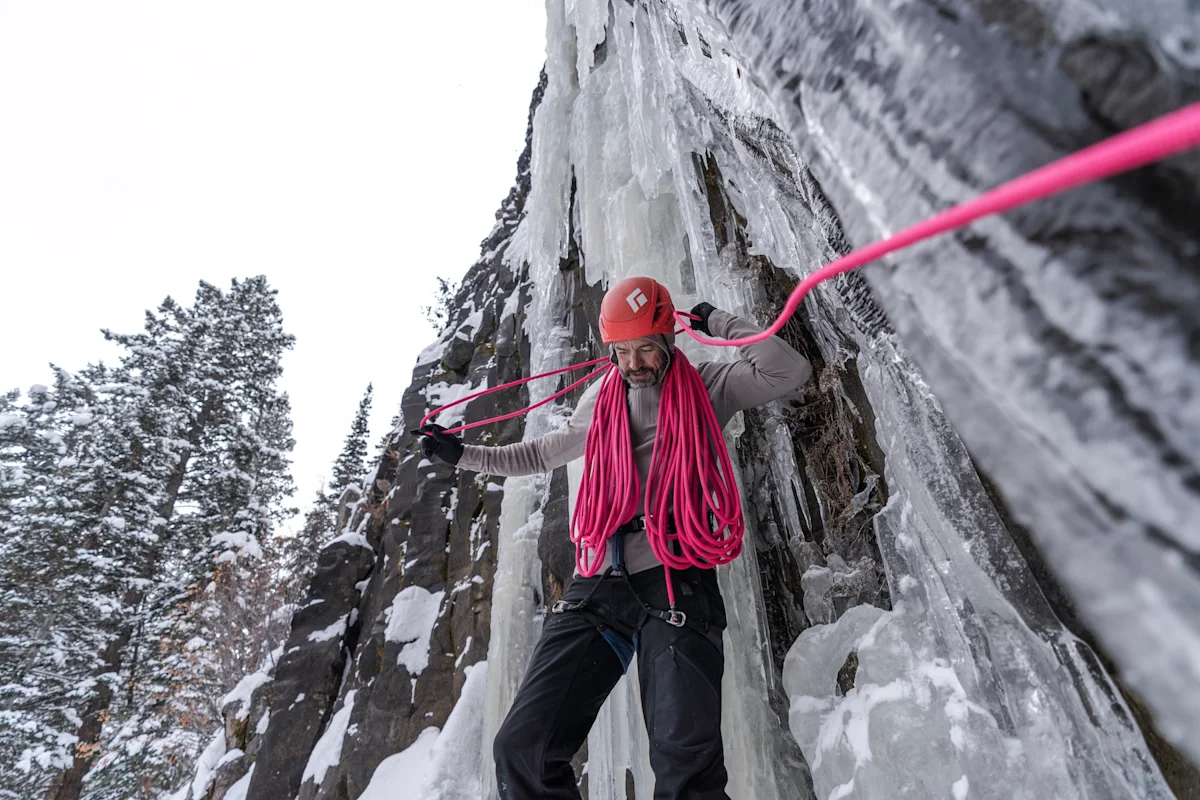
Photo courtesy Ibex
The Magic of Wool
Merino wool comes from Merino sheep, which are native to Spain but now raised all over the world, especially in Australia and New Zealand. The uniquely robust wool is prized for being the softest wool and for being able to absorb moisture and expel it back into the air efficiently. Merino wool can hold up to one-third of its total weight in moisture without feeling wet.
In addition, wool, unlike cotton, polyester or nylon, can absorb moisture at its vapor stage, which helps with thermoregulation, since the fabric can effectively wick sweat and emit the moisture into the surrounding atmosphere, allowing it to dry quickly. Wool is also naturally antimicrobial. Yet these attributes are all impacted by the way in which raw wool is turned into yarn.

Photo courtesy Outdoor Vitals
Nuyarn vs. Merino
Most 100% merino fabric is either ring spun or core spun. Producing ring spun merino requires twisting the fabric on a rotating ring into tight, rope-like yarn that is smooth and durable. Producing core spun merino requires wrapping merino fabric around another material, like nylon or polyester. Both methods twist raw wool to create a product that can be utilized in outdoor apparel.
According to Wynne, both methods also take the magic out of merino by creating a fabric that is twisted into a rope-like structure. Twisting wool removes the natural pockets of air in the fabric, reducing breathability. It also removes elasticity, since the tightly twisted fabric can’t elongate as easily. And since twisted merino incurs tension, it tends to rupture more easily. To increase durability the fabric is generally produced in a tighter weave, making it heavier and keeping it a cold-weather performer despite the temperature-regulating possibilities. Lastly, a tense, rope-like structure doesn’t allow for as much vapor stage absorption, making it less able to wick and release moisture.
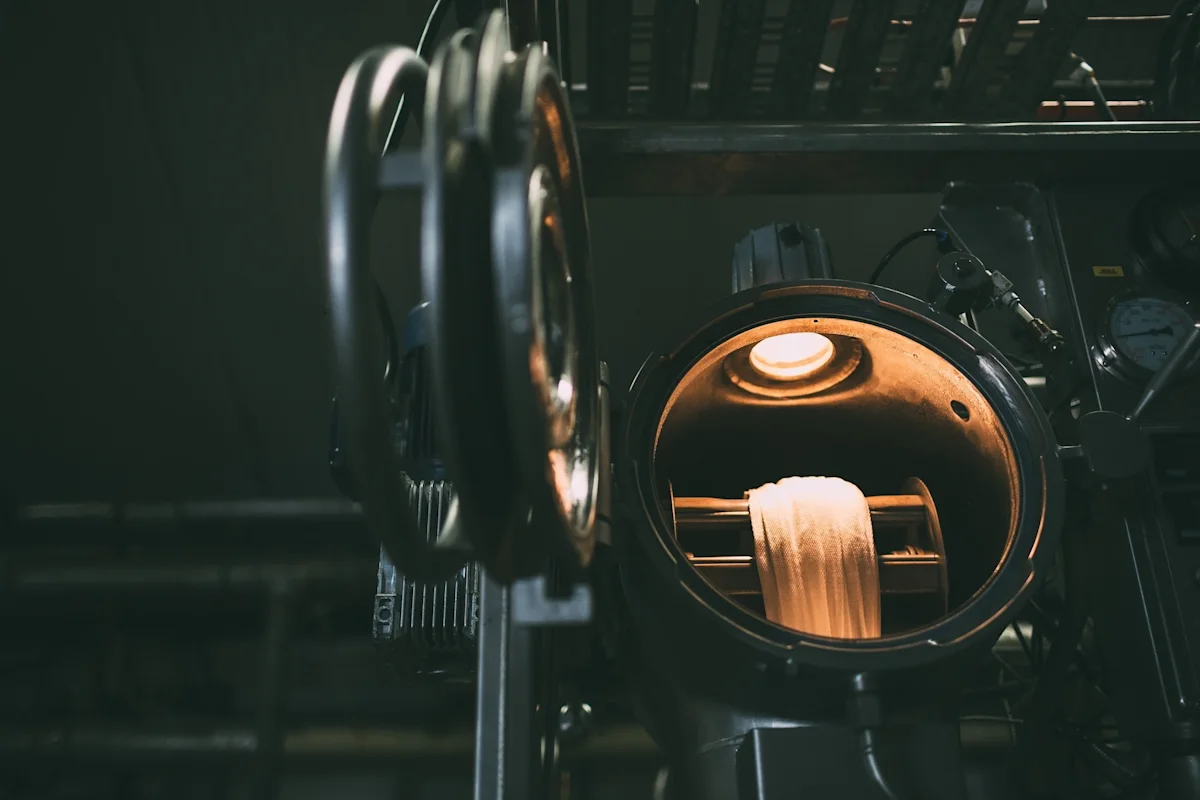
Nuyarn in production | Photo courtesy Nuyarn
“If you knock a mug of coffee over and get a paper towel you can pick up most of the coffee,” said Wynne. “If you twist the paper towel into a rope-like structure, you can pick up hardly any of the coffee.”
When Wynne and his team went on their wool deep dive, they learned that the reason merino is made the way it is because that’s the way it’s always been made. When Italy was the leading wool producer in the early-mid 20th century, the production process was the same. Though modern spinning machines are more efficient, the methodology hasn’t fundamentally changed.
Wynne wanted to conceive of a way to turn wool into a yarn without limiting its natural properties. Since he came from a textile background and not a spinning background, he was willing to start from the ground up and envision an entirely new approach.
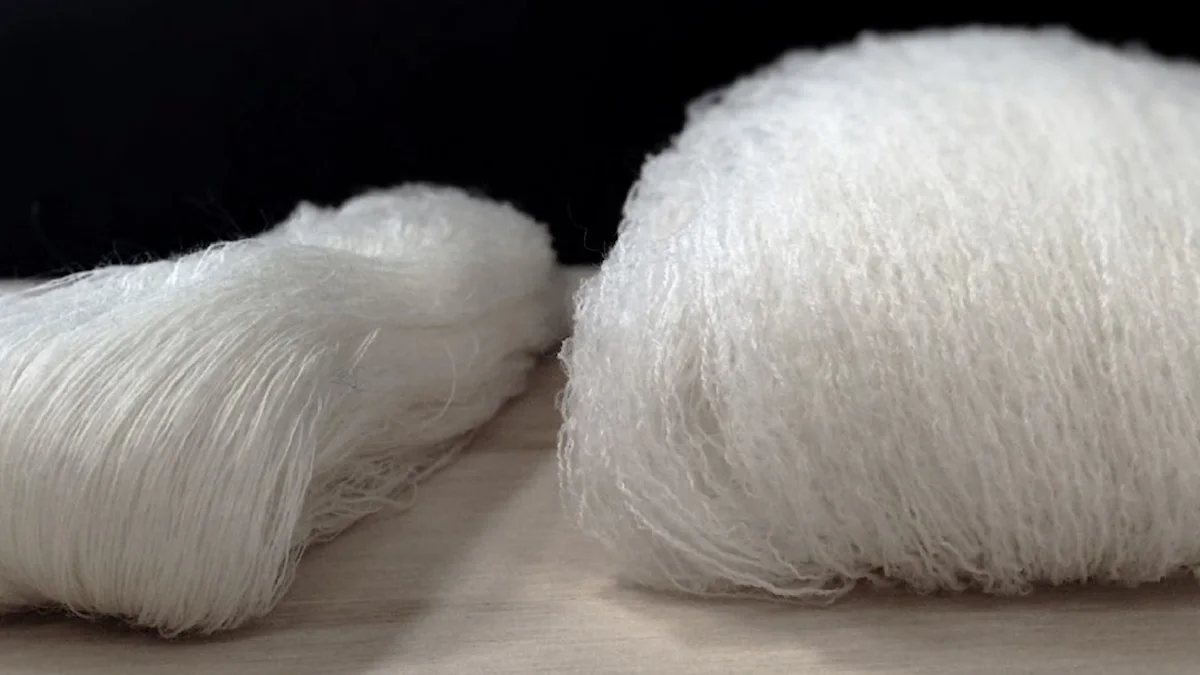
Conventional merino wool on the left, Nuyarn on the right | Photo courtesy Nuyarn
What is Nuyarn?
Nuyarn is essentially merino wool that is not twisted. In order to produce this yarn, Wynne's team designed a new machine. The machine works by taking merino fibers and drafting them to a high-performance nylon filament. But rather than twist them in a tight rope around the filament the machine spins the fibers together in a pattern that leaves them connected but untwisted. This results in a two-ply yarn structure where merino fibers are drafted around a performance filament (ie. two strands of fiber connecting to make a yarn) versus a single-ply yarn (one strand of fiber twisted together).
The final composition of most Nuyarn fabrics features a high percentage of merino wool (typically around 90%) blended with a small percentage of filament. Since wool doesn’t have a lot of natural elasticity, merino products often utilize a similar blend of merino with spandex, lycra, or elastane. However, these supplementary fabrics absorb and retain moisture, adding weight and wetness under sweaty or rainy conditions.
Nuyarn’s particular merino-nylon blend has a higher degree of stretch and a greater degree of loft than traditional merino, since the fabric is not compressed as much by being twisted. Thus it also breathes better and dries quicker. Nuyarn shared that third-party testing from a New Zealand based agriculture science institute called AgResearch and quality assurance company called Intertek has suggested that compared to 100% merino products, Nuyarn dries five times faster, is 8.8 times more durable, has 85% more elasticity, and retains 35% more heat.
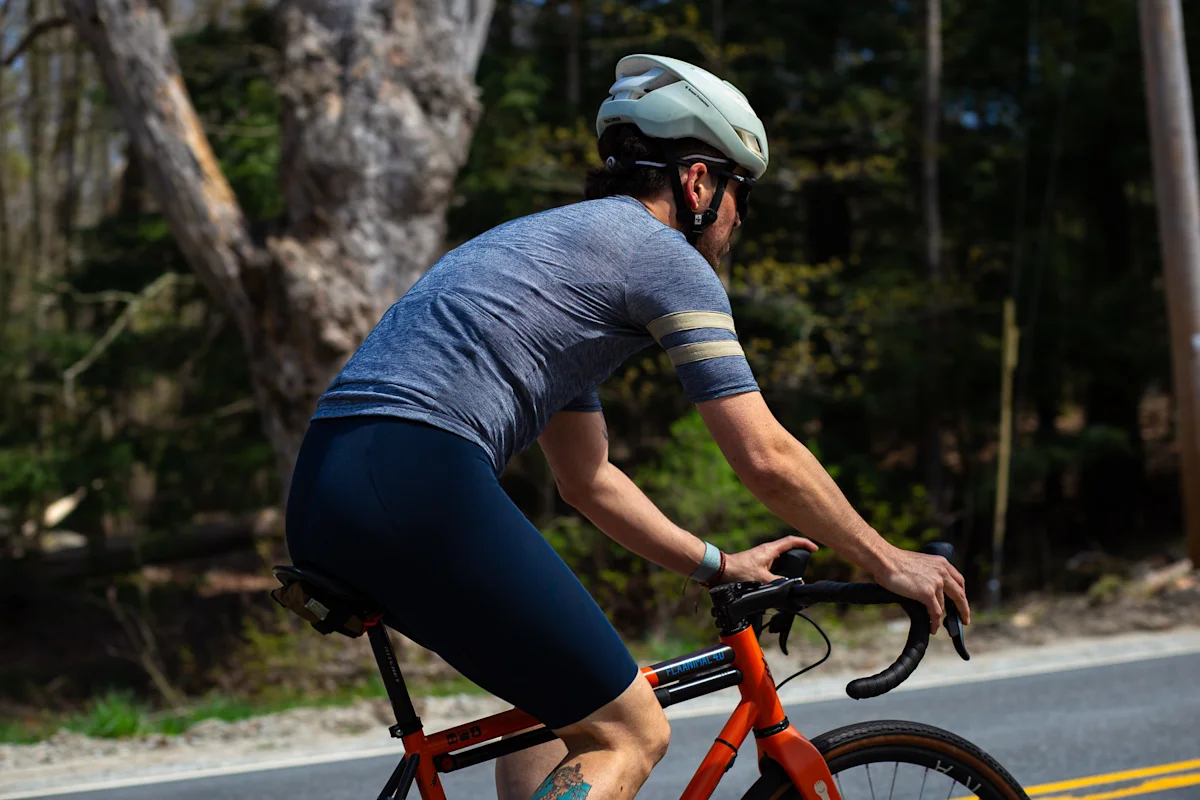
Photo courtesy Pinebury
A Four Season Wool
Of course, as with previous miracle fabrics, marketing teams are adept at presenting numbers that push the specific story they want to tell. Nuyarn products will ultimately have to stand out in the crowded outdoor apparel field to earn their stripes.
To that extent, one area Nuyarn is raising eyebrows is as a four season wool performer. It’s no surprise that the fabric has made its way into cozy and capable hoodies from companies including Artilect, Ibex, and Le Bent, but what might be most impressive is how it functions in the heat.

Photo courtesy LeBent
Even merino wool tees marketed as lightweight tend to be about 150 grams per square (gsm) in weight. I have plenty of merino shirts that I adore for three seasons, but the truth is, when the weather really heats up, I leave them in the closet. As temperature-regulating as merino might be, the fabric just feels too heavy for summer.
Nuyarn also says its production process allows it to create fabric that is 35% finer than traditional merino. Warm weather tees made with Nuyran can be in the 95-110 gsm range. Having tested a few I have found the softness, lightness, and breathability to be exceptional. The Outdoor Vitals Tern Tee is an ideal hiking base layer that is durable, breezy, and quick-drying. And the Le Bent Feathertop Hoodie, clocking in at 125 gsm, works as both a cool weather base layer and a warm weather sun hoodie.
Nuyarn is even showing up in summer footwear. HOKA used the technology in the upper of its Hopara 2, a water-ready hiking sandal that has been my go-to for paddling this summer, since durability, and the ability to absorb moisture and dry quickly are crucial.
Merino might be miraculous, but traditional production methods haven’t fully allowed it to flex as a fabric. The emergence of Nuyarn doesn’t negate merino, it offers a potentially better version of it: a performance wool that functions as nature intended. It might be time to dust off the old miracle fabric moniker.
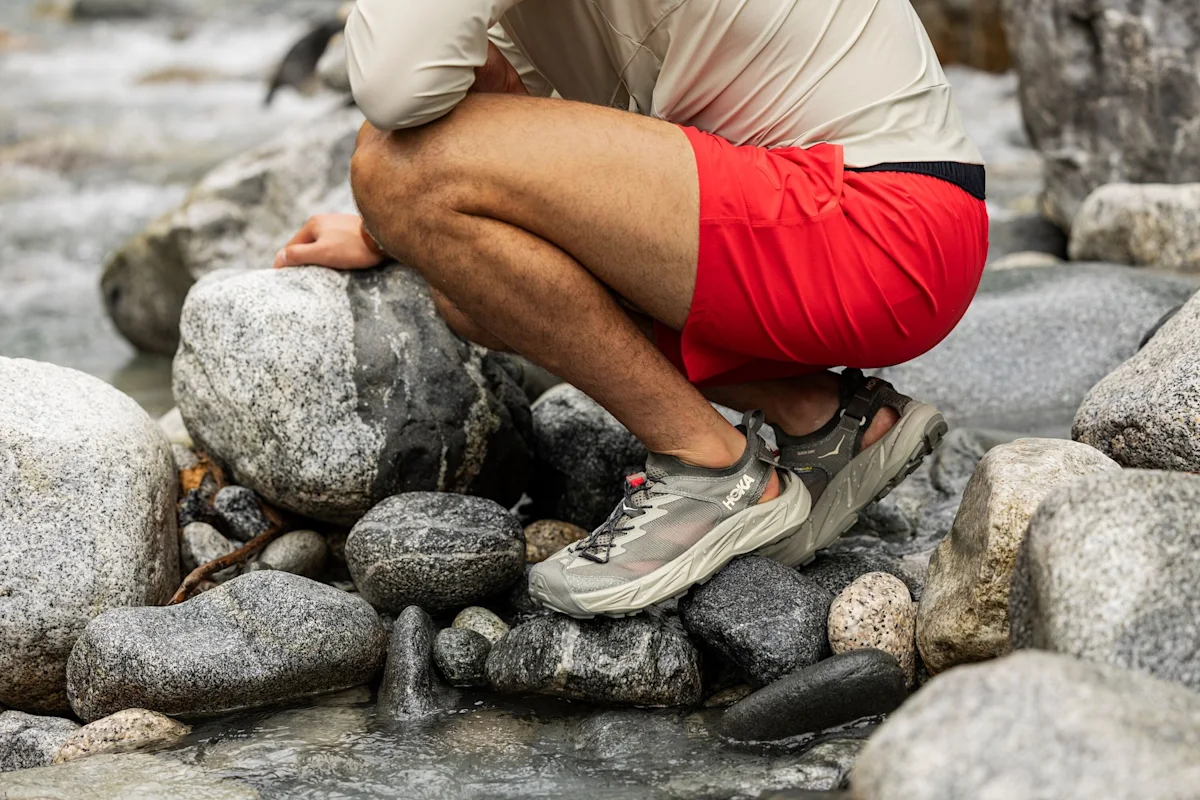
Photo courtesy Hoka
Frequently Asked Questions
What is Nuyarn?
Nuyarn is a blend of merino wool and nylon that is used primarily in outdoor apparel and footwear.
How is it different from merino?
Merino is typically produced on core spinning or ring spinning machines that twist the fabric, creating a single-ply yarn. Nuyarn is produced on a machine that spins the fabric together into a two-ply yarn. This allows the fabric to have more loft, elasticity, thermal retention, drying ability, and durability.
Which fabric is more sustainable?
Nuyarn performs better than traditional merino on the Martindale abrasion test. Since Nuyarn is more durable, the life cycle of the products might be longer, leading to less apparel in landfills. However both merino and Nuyarn are more sustainable than apparel made entirely from synthetics.
*Want to learn more about another surprising fabric making its way into outdoor clothing? Check out our guide to Alpaca vs Merino Wool.

